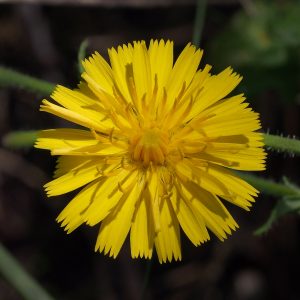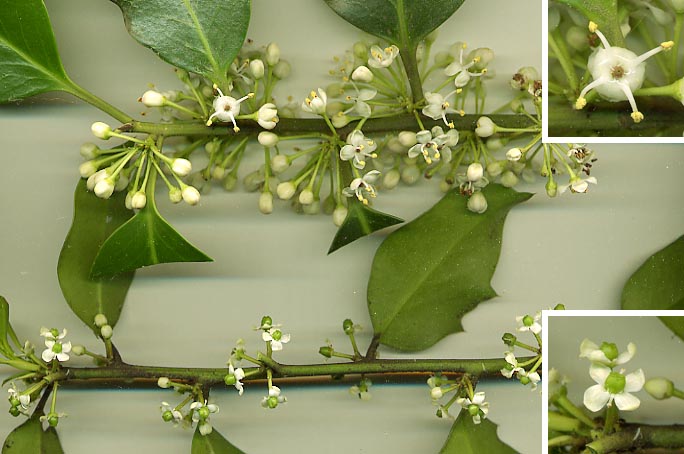Chapter 17: Sex, evolution, and the biological species concept

Sex, Evolution, and Species
Although for many organisms sex is crucial to the ability to reproduce, sex is an important concept to biology for more reasons than this. Sex is critical to two other highly significant biological topics: the process of evolution and the concept of species, two things that are in fact interconnected. Evolution describes changes through time. What is it that changes? It is not an individual organism, whose changes are described as ‘development’. What evolves are groups of organisms, i.e., populations (Fig. 1). Populations are usually described as a group of organisms of the same species. T he criterion that puts individuals together into a group called a species is the ability to interbreed, i.e., species are groups of organisms united by the fact that they can potentially interbreed, and the only way to interbreed is through sex. Sex is the process that connects individuals together in to something called a species, a group of interbreeding organisms. Species, i.e. interbreeding groups, are thought to be the biological entity that evolves. Additionally, sex is significant to the process of Darwinian evolution because:
- sex can be an important process that generates variation within a population and variation is significant to the evolution ary process, providing the ‘raw material’ upon which the process of natural selection can act.
- sex provides a mechanism to spread particular features within a population, allowing favorable characteristics to spread.
It should be pointed out that sex is certainly not required for the process of evolution. There are a number of groups (e.g., bacteria) that evolve readily and have no sexual process (although bacteria DO have processes that allow characteristics to spread within a population, it is not sex).

Moreover, groups that do not have sex cannot be categorized as having species (although oftentimes they are!) because sex is what delineates an ‘interbreeding group’, which is the criterion usually used to define species. Thus, although sex and species are significant to evolution, they are not essential to evolution. As noted earlier, several of the groups considered here (e.g., dinoflagellates) do not have sex, but the groups’ diversity clearly point to the fact that evolution has been, and presumably still is, operating.
Even within groups that are considered to be sexual, e.g., flowering plants, there are groups that do not participate in sex. Dandelions produce seeds but do so in a manner that does not involve sex. Such groups might be considered evolutionary ‘dead-ends,’ yet, as noted above, sex is not essential to the process of evolution.
The process of sex is significant to the grouping and naming practices discussed in Chapter 2. To deal with diversity, biologists group organisms that are phylogenetically connected (reflected in the fact that organisms within the group ‘look alike’). There are different levels of relatedness that correspond to different ‘levels’ in a biological classification: phylum, class, order, family, genus, species, variety. Except for the species level (and perhaps not even there!), all of these levels are not defined, e.g., there is no rule about what constitutes a family, about how similar organisms have to be to put them together in family grouping. As a consequence, there certainly can be some workers who will take a group, e.g., the pea family, and say that it should be considered as three families, making three groups, each of which is more uniform than is the group when considered as a single family. The species level is unique in having a criterion that defines who should be in any particular group.
However, in spite of the fact that there IS a concrete definition of species, i.e., an interbreeding group, this does not mean that it is easily applied or that when it is applied the appellation is based on the definition. It is not that easy to discern who is breeding with whom and this is especially the case with plants and fungi. Studies to determine mating behavior are time consuming and the overwhelming majority of species (even in the animal groups) have not been checked to see if what is being called a species actually is an interbreeding group. And many, many groups that are known to be asexual (all prokaryotes, most dinoflagellates, many fungi, some flowering plants) are grouped into entities called ‘species.’ Thus, at every taxonomic level workers still rely on subjectivity to delineate the extent of taxonomic groups; and one finds both ‘lumpers’ (people who tend to lump groups together and have fewer groups with more variation in each) and ‘splitters’ (people who tend to split groups up and have more groups with less variation in each).

Consider again the example of asexual dandelions (Fig. 3). The entity Taraxacum officinale is asexual, and is generally considered to be a species represented by its Latin binomial. But should it really be considered a species? Some workers consider the T. officinale to be an assemblage of several hundred ‘microspecies’, each of which is a clonal population.
For sexual populations, who breeds with whom is controlled by a number of parameters specific to the species being considered. Collectively, these factors describe a ‘breeding system’ and it turns out that flowering plants offer a rich diversity of breeding systems. A ‘closed’ breeding system is one where outcrossing (breeding with another individual) unlikely. An ‘open’ breeding system is one that encourages outcrossing. One might think that flowering plants, the vast majority of which produce bisexual flowers with male and female parts in close proximity, would have closed breeding systems. But there are a number of processes that can make their breeding system more open.
- Being dioecious, having unisexual flowers on plants that bear either male or female flowers but not both (Fig. 4). About 5% of flowering plants are dioecious including aspen, cannabis and holly.

- Being monoecious, having unisexual flowers, but both male flowers and female flowers are on the same plant, for example corn, cattail and most species of squash.
- Having bisexual flowers with parts that mature at different times, e.g., having flowers where first the pollen matures and is disseminated and then the stigmas are produced and are able to receive pollen.
- Having incompatibility systems that prevent pollen from being able germinate and/or grow on stigmas of the same plant and therefore unable to fertilize its own flowers.
- An inability to form seeds unless the sexual process is accomplished.
It is significant that each of these features is not ‘all or nothing’—there are plants that are generally unisexual but may have a few flowers of the second sex; there are plants that mostly have unisexual flowers but have a few bisexual ones; there are plants which have separate maturation times for the male and female parts of the flower but have multiple flowers so that on any one plant there can simultaneously be both functional male and female parts; there are plants that have flowers where self pollen can grow on but just not as fast as non-self pollen; there are plants that will produce seeds without sex but only if sex didn’t happen (e.g., pollination didn’t occur); there are plants that almost always produce seeds asexually but occasionally will go through the sexual process; there are plants that produce megaspore mother cells that undergo meiosis to make haploid megaspores which then fuse with each other to form a diploid cell that behaves like a zygote!
Breeding systems are important because they influence plant evolution, patterns of variability and the reality of things that we identify as ‘species.’
Further Reading and Viewing
- “Plant Mating Systems Often Vary Widely Among Populations” by Michael R. Whitehead. Plant mating systems.
- “Ernst Mayr and the modern concept of species” by Kevin de Queiroz. The biological species concept.
- Images of monoecious plants (separate male and female flowers on the same plant for squash and oak).
- “Plant mating systems in a changing world” by Christopher G. Eckert. Interesting examination of human population’s effect on plant breeding systems.
Media Attributions
- Bacteria diagram © Ali Zifan is licensed under a CC BY-SA (Attribution ShareAlike) license
- Dandelion © Petar Milošević is licensed under a CC BY-SA (Attribution ShareAlike) license
- Holly © Tigerente is licensed under a CC BY-SA (Attribution ShareAlike) license

